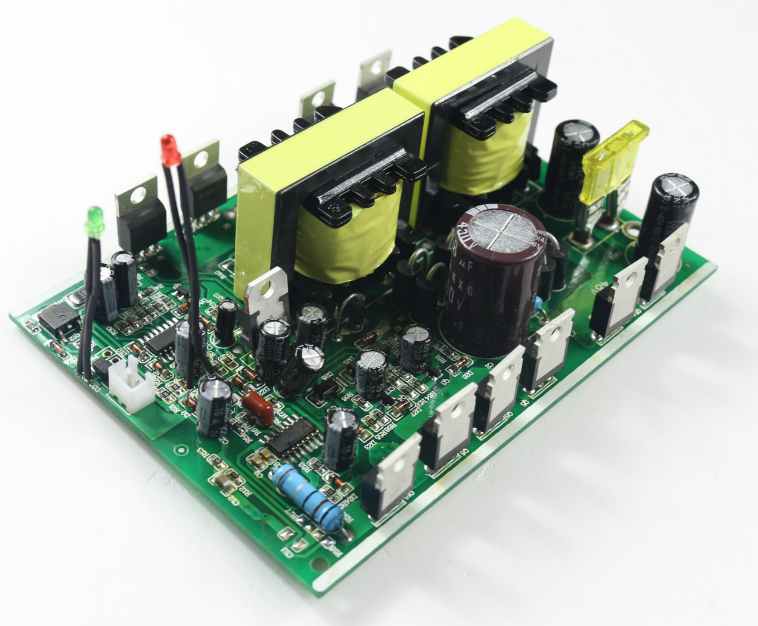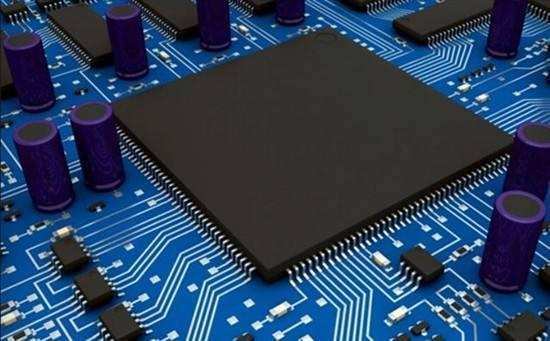
This paper interprets four basic characteristics of RF circuit from four aspects: RF interface, small expected signal, large interference signal, interference of adjacent channels, and gives the important factors that need special attention in PCB design process.
1, RF circuit simulation RF interface
In concept, wireless transmitter and receiver can be divided into two parts: fundamental frequency and radio frequency. The fundamental frequency includes the frequency range of the input signal of the transmitter and the frequency range of the output signal of the receiver. The bandwidth of the fundamental frequency determines the basic rate at which data can flow through the system.
The fundamental frequency is used to improve the reliability of data flow and reduce the load of transmission medium imposed by the transmitter under a specific data transmission rate.
Therefore, PCB design fundamental frequency circuit, need a lot of signal processing engineering knowledge.
The RF circuit of the transmitter can convert the processed fundamental frequency signal, frequency up to the specified channel, and inject this signal into the transmission media.

In contrast, the receiver's RF circuit takes the signal from the transmitted medium and converts it to a fundamental frequency.
Transmitters have two main PCB design objectives: the first is that they must emit a specific amount of power while consuming as little power as possible. Second, they should not interfere with the normal operation of transceivers in adjacent channels.
As far as receivers are concerned, there are three main PCB design goals: First, they must accurately restore small signals; Second, they must be able to remove interference signals outside the desired channel; Last but not least, as with transmitters, they must consume very little power.
2, RF circuit simulation of large interference signals
The receiver must be sensitive to small signals, even in the presence of large interfering signals (blockers).
This occurs when an attempt is made to receive a weak or distant transmitted signal while a powerful transmitter is nearby broadcasting on an adjacent channel.
The interference signal may be 60 to 70 dB larger than the expected signal, and can block the reception of normal signals in the form of mass coverage during the input phase of the receiver, or make the receiver produce excessive amounts of noise during the input phase.
Both of these problems can occur if the receiver is driven into a nonlinear area by the interference source during the input phase. To avoid these problems, the front end of the receiver must be very linear.
Therefore, "linearity" is also an important consideration when designing a PCB circuit board receiver.
Since the receiver is a narrow-frequency circuit, the nonlinearity is measured in terms of "cross-modulation distortion".
This involves using two sinusoidal or cosine waves of similar frequency in the central band to drive the input signal and then measuring the product of their reciprocal modulation.
In general, SPICE is a time-consuming and expensive simulation software because it has to run many loops to get the necessary frequency resolution to understand the distortion.
3, RF circuit simulation of the small expected signal
The receiver must be very sensitive to detect small input signals. In general, the input power of the receiver can be as small as 1 μV.
The sensitivity of the receiver is limited by the noise produced by its input circuit. Therefore, noise is an important consideration when designing a printed circuit board receiver.
Moreover, the ability to predict noise with simulation tools is essential. Typical superheterodyne receiver. The received signal is filtered and the input signal is amplified by a low noise amplifier (LNA).
This signal is then mixed with a first local oscillator (LO) to convert it to intermediate frequency (IF). The noise efficiency of the front end circuit depends mainly on the LNA, mixer and LO.
Although LNA noise can be found using traditional SPICE noise analysis, it is useless for mixers and LO, because the noise in these blocks is heavily influenced by the large LO signal.
Small input signals require the receiver to have a very large amplification capability, usually requiring a gain as high as 120 dB. At these high gains, any signal that is coupled from the output back to the input can cause problems.

The important reason for using the superheterodyne receiver architecture is that it can distribute the gain over several frequencies to reduce the probability of coupling.
This also makes the frequency of the first LO different from that of the input signal, preventing the large interfering signal from "contaminating" the small input signal.
For different reasons, direct conversion or homodyne architectures can replace superheterodyne architectures in some wireless communication systems.
In this architecture, the RF input signal is directly converted to the base frequency in a single step, so that most of the gain is in the base frequency, and LO is the same frequency as the input signal.
In this case, the influence of a few couplings must be understood, and a detailed model of the "stray signal path" must be established, such as coupling through the substrate, coupling between the substrate and bondwire, and coupling through the power line.
4. Interference of adjacent channels in RF circuit simulation
Distortion also plays an important role in the transmitter. The nonlinearity of the transmitter in the output circuit may cause the bandwidth of the transmitted signal to be spread among adjacent channels. This phenomenon is called spectral regrowth.
The bandwidth of the signal is limited until it reaches the transmitter's power amplifier (PA); But "cross-modulation distortion" in PA causes the bandwidth to increase again. If the bandwidth is increased too much, the transmitter will not be able to match the power requirements of its adjacent channels.
When transmitting digitally modulated signals, it is virtually impossible to use SPICE to predict the re-growth of the spectrum. Because the transfer operations of approximately 1000 digital symbols must be simulated to obtain a representative spectrum, combined with high frequency carriers, these make SPICE transient analysis impractical.






